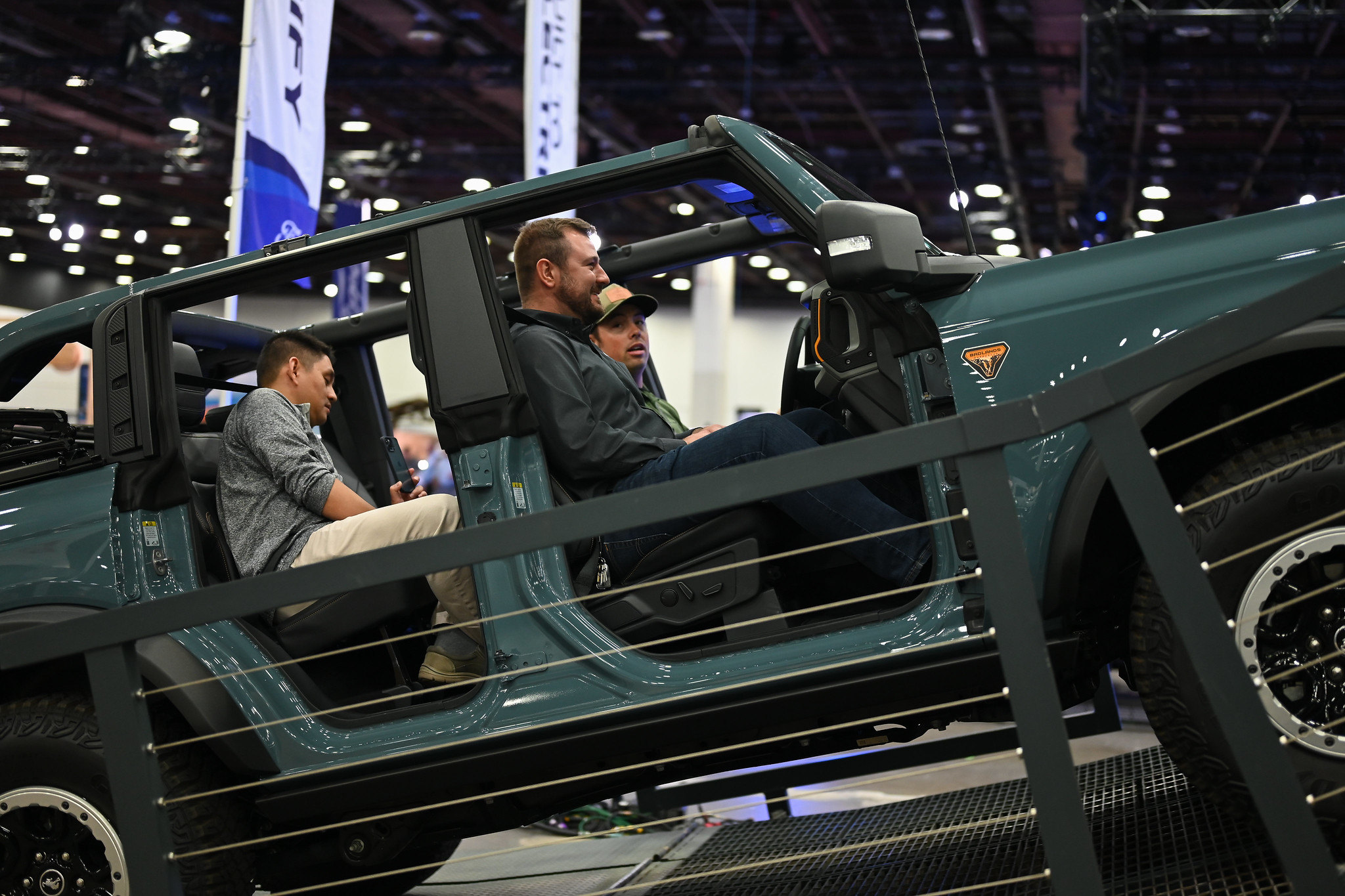Crain’s Detroit Business
Dustin Walsh
Sept. 15, 2022
The auto show is dead.
We all know this year’s Detroit North American International Auto Show is different. That was the plan all along, before the global COVID-19 pandemic upended public events. The Detroit Automobile Dealers Association announced in 2018 the show would transition from the glitz and glamor of a traditional show to a more “festival” approach, an attempt to take some steam out of the booming Consumer Electronics Show in Las Vegas that had been rubbing on its bumper for years.
Now 1,326 days since the last auto show in Detroit — or 290 days longer than John F. Kennedy served as the 35th president — the new reimagined show is back and it’s … different.
Gone are the sparkly dress-clad models and hourly new vehicle unveilings. Gone are the early morning pints of Weihenstephan Hefe Weissbier in the ZF Friedrichshafen booth and the Bavarian woman making fresh pretzels at the Audi display and the kitchy freebies offered by the Detroit Three.
Instead, Huntington Place, nee Cobo Center, feels more like the Suburban Collection Showplace in Novi. But no campers or pontoon boats, just cars. Cars that don’t even fill all the empty space of the more than 700,000-square-feet convention center. Sure, there’s a towering rubber ducky in the front lawn and a smorgasbord of flying vehicles and new technologies.
At the show in 2019, there were 4,568 journalists from 60 countries in attendance to cover 44 vehicle reveals. This year, the expectations are less with organizers expecting only 1,000 to 2,000 journalists to cover just eight to 10 reveals, my colleague Kurt Nagl reported.
But what’s in an auto show?
For journalists, it’s access. A colleague at Automotive News complained to me on the opening day of the show (Wednesday) about the lack of quality executives to interview.
“We used to be able to fill our notebooks with six months of stories,” he grumbled as we peered from one end of the Huntington to the other, an impossible act in previous years as the shows massive floor-to-ceiling displays blanketed the building.
Yet I wouldn’t dare call the show a failure. Sure, the displays are less impressive — Subaru’s main attraction is a pen to play with puppies — but it’s the business of selling cars that the show propagates. That’s still happening. The upper bowels of the convention center are still home to important business meetings, and ideas are still being shared.
“Is there a good vibe and a ton of connecting and activity today? Yes,” said Glenn Stevens, executive director of industry advocacy group MichAuto. “It’s a rebuild of sorts. Lots of people are figuring out how to navigate the business changes and trends driving the industry and their companies. It’s the same for the show.”
And while journalists grumble and groan about fewer reporting opportunities, the show’s ultimate audience is the public. Ticket holders will still enter Huntington Place starting on Sept. 17 and be able to get up close and personal with cars. They will be able to open the frunk on the new F-150 Lightning electric truck and toggle the shifter paddles on the 670-horsepower mid-engine Corvette Z06. Hell, they can even test drive several new vehicles from Jeep, Ram and Ford at the indoor tracks in the center.

And hosting the show during warmer months of the year, instead of frigid January, is expected to have greater spillover impact for the city itself.
“This is going to be special,” Mayor Mike Duggan told reporters during a media event at the show earlier this week. “All the downtown restaurants I have talked to are very excited. We’re going to see the economic benefit spin off a lot differently than when you drove (here) in the cold, parked here in the structure, came in and drove back home.”
The only metric of success that ultimately matters for the Detroit show is public attendance. It has averaged about 800,000 visitors annually for decades. If the public cares, gets inside the show and eventually makes a big car purchase … isn’t that triumph? Isn’t that really the point of it all?
So, sure, journalists can make fun of the tacky rubber dinosaurs near the Ford F-150 Raptor or the silly display of the Flintmobile (from the Flintstones cartoon) but we’re no longer the relevant market for automakers. They have social media and off-site events to wow the public. And that’s okay. There is absolutely nothing wrong with the Detroit North American International Auto Show being lot less global and a lot more regional. Car shoppers will still delight.
Long live the auto show.

